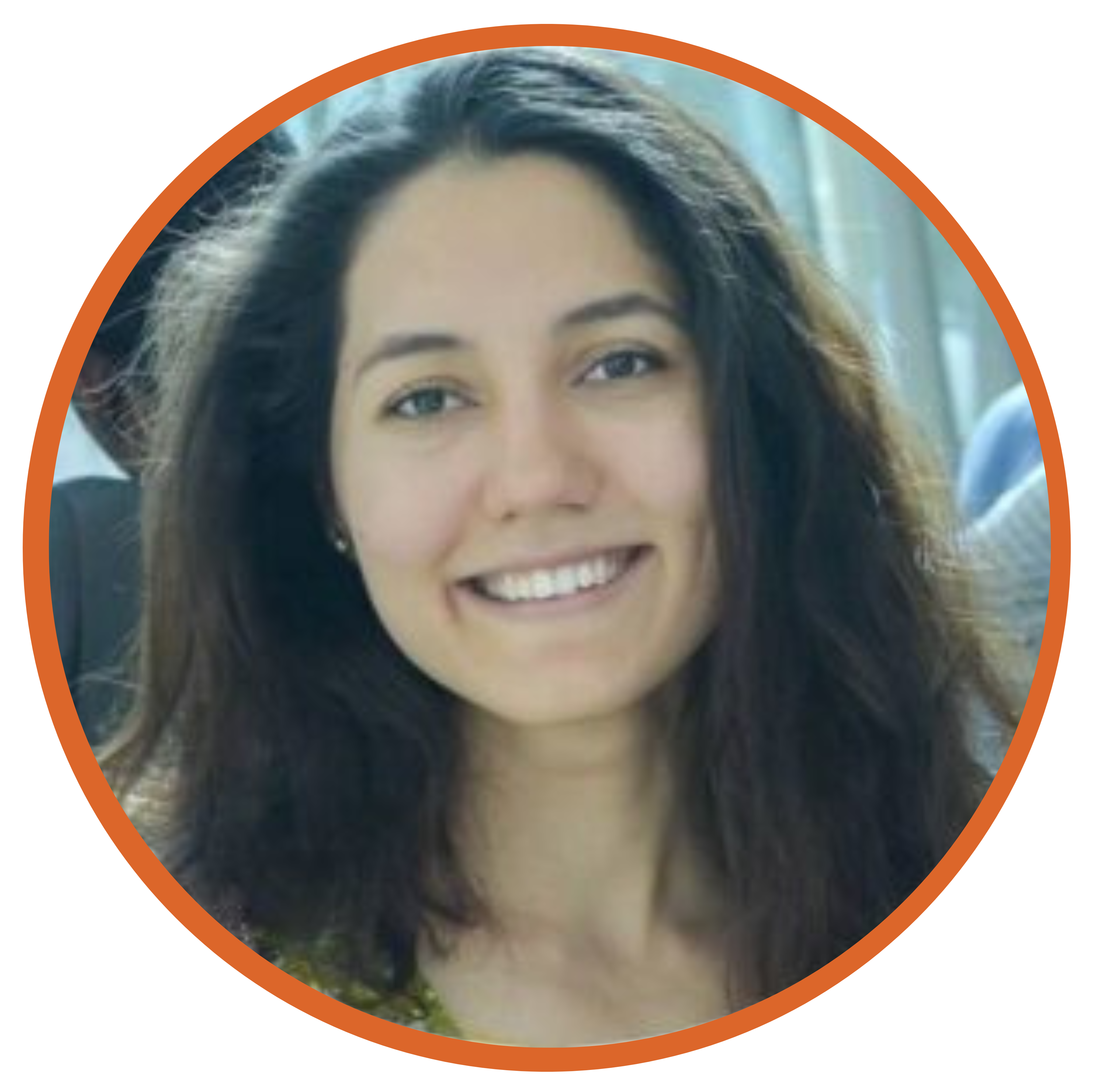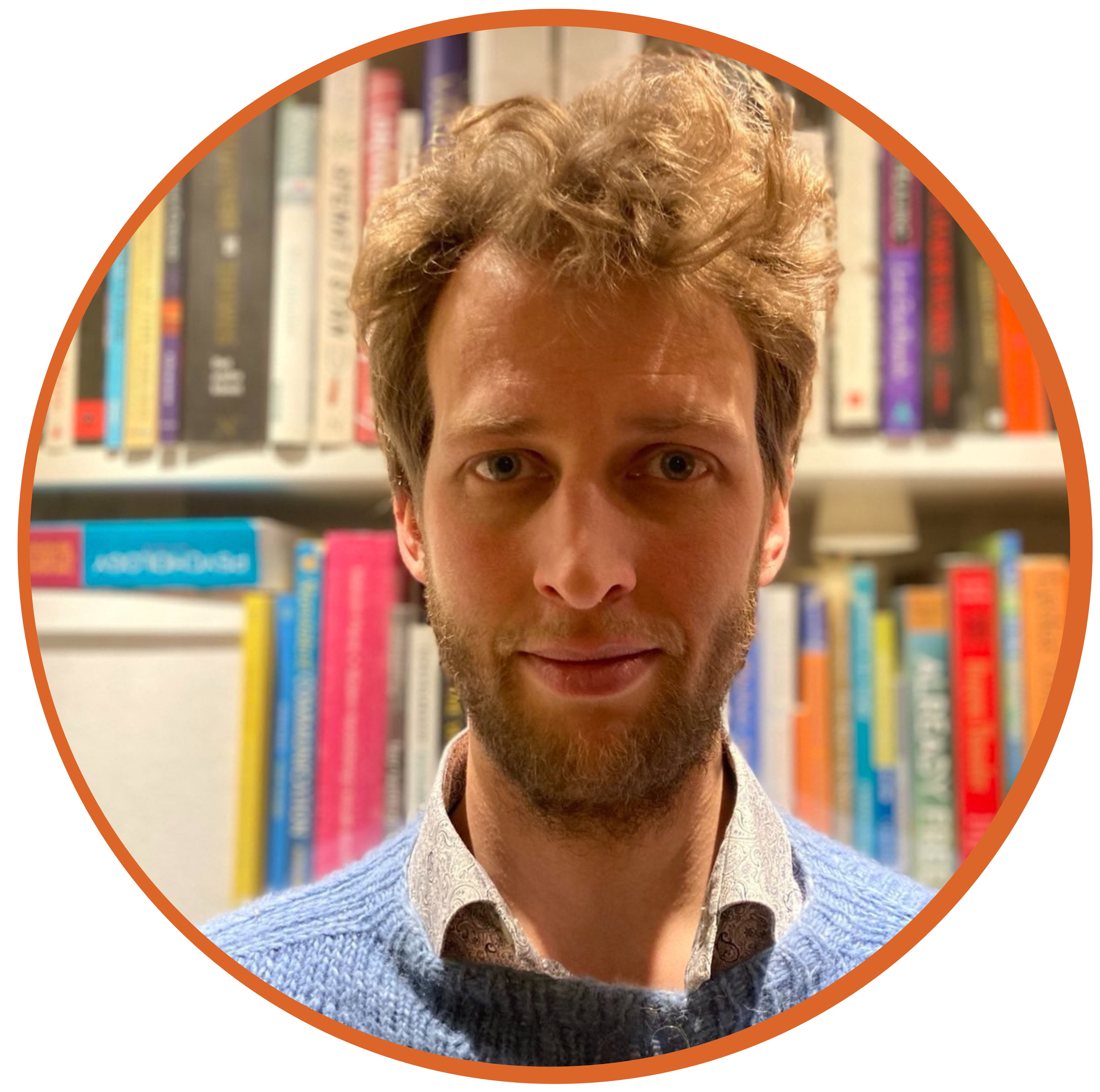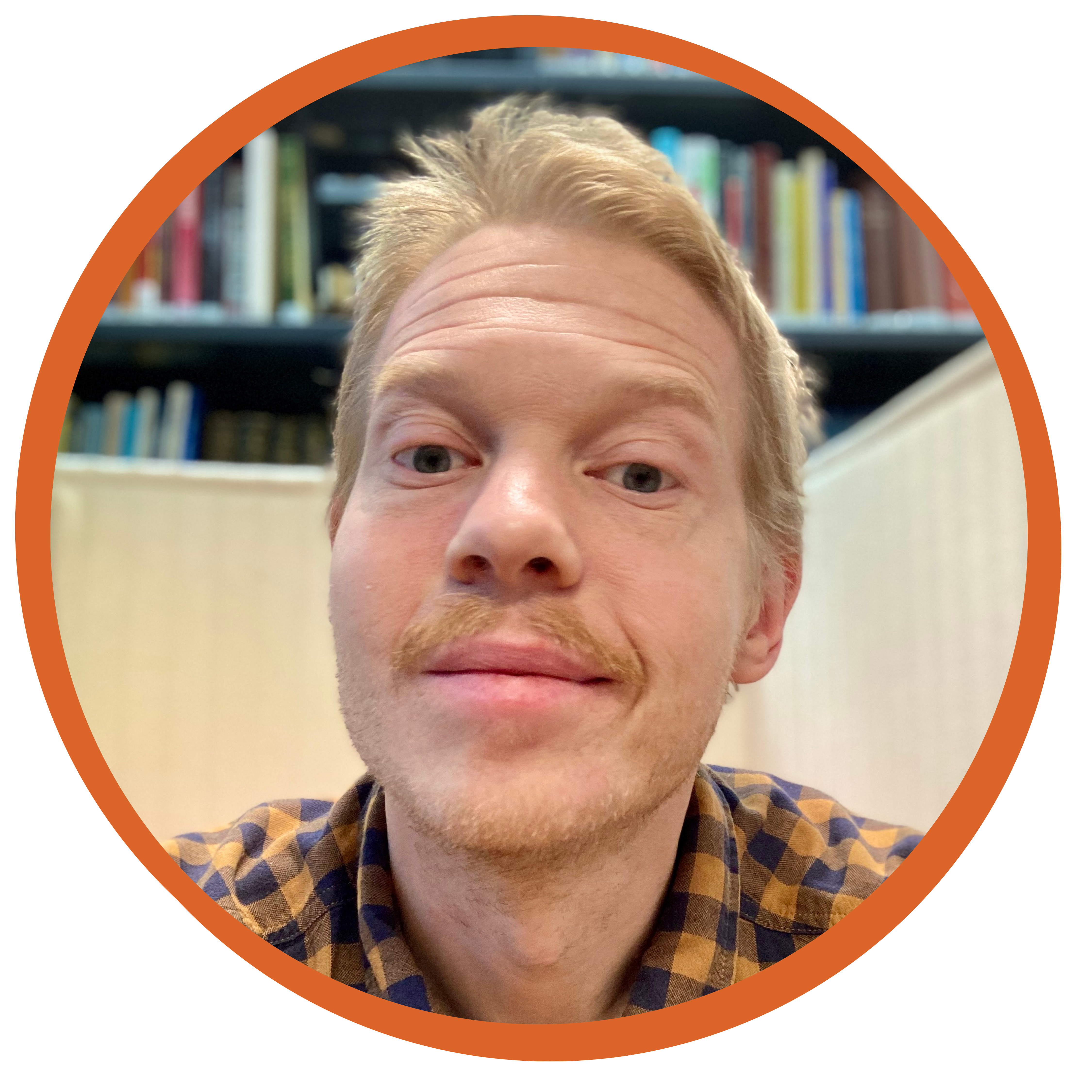CAG is turning 10 this year! We are celebrating by looking in the rearview mirror.
In these short four interviews, we talk to people who have been following and shaping CAG’s development throughout the years. Below, we get the insights and reflection from Lola Matmusaeva, current chairperson, Gustaf Sörnmo, founder and current treasurer, Viktor Romanov, coordinator at CAG, and Johan, a steady board member and former chairperson.

Lola Matmusaeva, current chairperson with experience working in the partner organization in Kyrgyzstan and CAG office in Malmö before becoming a board member in 2019.
Hi Lola. What is the role of the board within CAG?
In my opinion, the board’s role is threefold. First, it designs the direction for the organization in terms of thematic focuses, strategic partnerships and investment areas. Second, it ensures the wellbeing of the organization by taking care of people, values, vision, mission, culture, sustainable finances. Third, it supports the office in their requests and helps to resolve any roadblocks.
During the years you have been involved and from your perspective, what are some of the biggest achievements of the organization?
Let me highlight three achievements since 2013 when I first got involved in CAG’s work. In 9 years, the organization gained the human power required for organizational success. More specifically, it has dedicated staff, volunteers, members, board and partners. Another achievement that I witnessed is the growth and maturity of the organization in terms of its structure, strategy, presence in Sweden and reach in Central Asia covering Kyrgyzstan, Uzbekistan, Tajikistan and Kazakhstan. Of course, the biggest achievement for me is the changed lives as we empower youth, women and other vulnerable groups.
“In 9 years, the organization gained the human power required for organizational success. More specifically, it has dedicated staff, volunteers, members, board and partners.”
What do you consider CAG’s role to be within international development cooperation?
- Promote bottom up approach to international development
- Elevate the voices from Central Asia
- Connect and build platforms for activists, researchers, practitioners and Central Asia enthusiasts to come together for knowledge exchange and mutual support.
How do you see CAG develop within the next 5 years?
In 5 years, I wish for more financial sustainability for the organization that would allow us to create opportunities for long term partner support (moving away from project based support). Furthermore, I see it being active in more European countries and leveraging their development support to Central Asia. Most importantly, I want CAG to thrive with new people, new energy and new ideas!!!

Gustaf Sörnmo, sociologist and founder of Centralasiengrupperna who currently works with the environmental projects in Kyrgyzstan and Tajikistan, organizational strategy and methodology development.
Hi Gustaf! One of the most frequently asked questions we get when talking about CAG’s work to the general public in Sweden is ‘Why Central Asia?’. Could you give us a bit of a background to how it all started?
It started in 2009 when I traveled in Kyrgyzstan and Kazakhstan, meeting activists and people in various civil society organizations, learning about the challenges and needs of different communities. I wanted to visit this region since it was basically a blank spot on the map and no news would reach Sweden. As a sociologist I was curious how the civil society sector worked, organized and which approaches they used. Based on the meetings during the trip and the network established, several exchange programs were organized for youth leaders in both Sweden and Kyrgyzstan – which provided opportunities to learn from each other about the respective contexts, working methods, build joint campaigns etc. For instance, CAG was very active in the aftermath of the conflicts affecting southern Kyrgyzstan in June 2010 and supported several peace and conflict transformation initiatives.
What was your original vision for CAG as an organization in terms of its role in Sweden? How has this developed over the past 10 years?
At the outset there really was no comprehensive vision that we started from; but rather a very pragmatic approach concerned with building relations, learning from local communities and finding ways to work in solidarity and support their causes and interventions. While we have retained this bottom-up, grassroots and community-led approach today; over the years, we have formalized a vision that is guiding our work in Central Asia, including our solidarity partnerships. The board is currently working on articulating the organizational goals of our four different thematic areas, and based on these a more holistic, inclusive overarching vision will be framed.
“While we have retained this bottom-up, grassroots and community-led approach today; over the years, we have formalized a vision that is guiding our work in Central Asia, including our solidarity partnerships.”
What is CAG’s role in Central Asia and how has this developed over the past 10 years?
CAG has always worked with grassroots actors and prioritized issues and agendas that were downplayed or ignored by mainstream donors and NGO sector. This has been a constant feature of our work since the early days. We have also had a broad understanding of international partnerships and collaborations – i.e. not only financial support, but also exchange of experience and knowledge, joint campaigning and advocacy work, capacity development etc. Thematically there have been several changes over time within CAG, though. Initially we worked mostly with youth activism and conflict transformation – which was broadened to include women’s rights, LGBTQ, culture and climate & environment. As our understanding of these thematic areas has deepened, so has our priorities and interventions shifted. As we see the deep interconnectedness of many of these issues, we prioritize holistic interventions that deal with multiple problems simultaneously. Finally, our role in Central Asia has broadened geographically since 2012 – initially, we worked only in the southern parts of Kyrgyzstan; today we work in 4 Central Asian countries, with projects in Russia and beyond.
“CAG has always worked with grassroots actors and prioritized issues and agendas that were downplayed or ignored by mainstream donors and NGO sector.”
CAG supports a wide range of partner organizations in Central Asia – how do you identify the partner organizations? Are there organizations that CAG would not partner with?
Over the years, we developed a pretty detailed process for this, as defined in our international partnership policy. In general, we are looking for prospective partners that have a high level of knowledge/expertise in their field; strong links to the communities they work with (preferably they are a community-based organization); shared contextual baseline analysis; innovative methodologies; critical perspectives on mainstream developmentalism; democratic practices and non-hierarchical organizational structures; financial transparency. Obviously, there are many organizations we would not partner with, for a variety of different reasons. For instance, in Central Asia there are plenty of civil society organizations that mostly exist on paper and rarely do much meaningful work in reality, often described as ‘grant eaters’.

Viktor Romanov, who comes from Kyrgyzstan, joined Central Asia Solidarity Groups in 2015 and is currently working as coordinator at the organization.
What was it about CAG that made you become involved in the organization?
To make a very long story short, I ended up focusing on quite a cliché, naïve, but ultimately important question “What makes democracy work?”. After months long research, I stumbled on the theory of social capital and ended up dedicating my thesis work to study it. Eventually, I got critical of my own work, but the gained knowledge and experience turned out to be invaluable. When I found out about CAG and got to know the organization as a volunteer, I realized that the work that is being done by CAG might be the answer to my question! The way that CAG implements development work in Central Asia, its values, mission and vision, focus on grassroots movements and organization – be it youth, women’s, and climate organizations are one of the few reasons why I am glad that I became involved in the organization in the first place.
“When I found out about CAG and got to know the organization as a volunteer, I realized that the work that is being done by CAG might be the answer to my question!”
Having been part of the organization for 7 years in different roles and positions – and currently coordinator – you influence organizational processes and priorities – what are the most important things to keep in mind in such a position?
CAG is a horizontally structured organization, which in practice means that the decisions are made not by one person, but rather collectively. Since I have been with CAG for 7 years, at some point it became natural that I became a point of reference not only within a given project with specific aims and tasks, but rather a point of reference within the organization – at least in most of the cases. Transparent communication is the key to be able to work in such a position. CAG has also internalized a long-term strategy of our work, which requires a continuous follow-up and analysis of the processes – be it a project in Central Asia, Sweden or a force-majeure situation. I also believe that no set of skills or strategies can prepare anyone for a position of a coordinator, rather these skills come from one’s experience, understanding, continuous learning and passion that enable the acquisition of relevant skills, tools and knowledge.
You have been involved at CAG since 2015 – what about the organization motivates you to keep going?
I joined CAG as a volunteer in 2015. Back then, CAG wasn’t quite like this as it is today. It became more institutionalized, sustainable, developed its own strategy and established working systems. Professionally, I grew up together with the organization and there are many opportunities to do so today and in the future. I believe that the daily work of any dynamic civil society organization is never the same and CAG is no exception. It is a double-edged sword as well. Some days or weeks I must focus on researching, writing and doing tons of reading, which eventually gets a bit heavy. In the long-run, the reward is my experience and knowledge, but the most rewarding moment is when you get the results – be it a positive decision, or positive feedback of the work that CAG does. On another note, I value and share organizational principles, mission and vision. I also appreciate that we collaborate with grassroots organizations in Central Asia, and we have a fine balance between being a grassroots and more established, professionalized organizations. In my opinion this balance is vital as the organization is not out of touch with the Central Asian realities, which is the key to a success. In addition, I enjoy working with the CAG team, which is international, diverse and representative of Sweden and Central Asia.
“I enjoy working with the CAG team, which is international, diverse and representative of Sweden and Central Asia.“
CAG runs lectures, role play day, exhibitions and other events in Sweden to spread information about Central Asia, the work of CAG and partner organizations. From your perspective, how can people act on that information and support CAG’s partner organizations and civil society in Central Asia?
Most of the activities that CAG organizes in Sweden aim to raise awareness about the region of Central Asia and how development cooperation looks like in the region. The organization wants to break stereotypes and deliver why and how the region is important for the Swedish/Global community. Another goal of the activities is to increase the engagement of the people we involve in our activities. The engagement can manifest itself in many ways. For example, people can support our work, get directly engaged in the work of our partners, influence policy-making processes, and be in solidarity with the activist community.

Johan Blomqvist, board member, former chairperson, who also spent one year with the partner organization Novi Ritm in Kyrgyzstan.
Hi Johan. What makes up a good CAG board member?
All board members have hands-on and practical engagements in CAG and the organization’s activities, and they are often involved in different useful activities and projects. Most important for this to happen is the board members’ passion for Central Asia and people from the region, present day countries and their history, as well as sad happenings and effects due to climate and environmental change, youth, gender and LGTBQ+ inequality and discrimination, political and military events and other downsides. Passion, engagement and commitment comes from all our good board members – be it physical or theoretical, daily practices or hypotheses for a better world. Having many different or broad ideas amongst the board members, while at the same time having understanding and compassion, creates an effective and pleased board at CAG.
During the years you have been involved, and from your perspective, what are some of the biggest achievements of the organization?
CAG has evolved over the years that I have been involved with the organization. This has happened through development of aims and increased range of activities, the number and types of partners, as well as number of employees and engaged volunteers. When I started working with CAG, I was in Osh in Kyrgyzstan for a year. I was there to supervise and facilitate a project with Novi Ritm, one of the first projects for CAG, helping youth mobilization, and the year where Novi Ritm became registered with the local government. Since then CAG has grown, slowly but surely increasing engagement with trustworthy activists and organizations – both smaller local grassroots organizations and international NGOs.
What do you consider CAG’s role to be within international development cooperation?
CAG is a helpful organization, as we provide opportunities for projects, and to create networks to connect individuals and organizations. This offers chances to passionate and creative people, and to their projects and practices. It is something that often is difficult for smaller and newer organizations, and for passionate individuals without a supportive organization. These opportunities are not only financially useful. They are also socially beneficial because of the connections with others – both locally and internationally. CAG is a creative and social link; and, as an organization with individual members, it is a place where people get the chance to share their passions in a creative way.
“CAG is a creative and social link; and, as an organization with individual members, it is a place where people get the chance to share their passions in a creative way.”
How do you see CAG develop within the next 5 years?
In five years I see CAG as very similar to now, as well as different. CAG will most likely be similar, because the organization is passionate about long-term connections and productive relationships. Although both CAG and partners hope for a better world, unfortunately it is more likely that there is a need for additional long-term connection and engagement. Positively, CAG has a goal to retain connections and collaborative support. While CAG’s oldest partner organization, Novi Ritm, recently celebrated its five year birthday, I am sure that in five years, Novi Ritm has turned 10 years old and is with CAG celebrating the collaboration.

